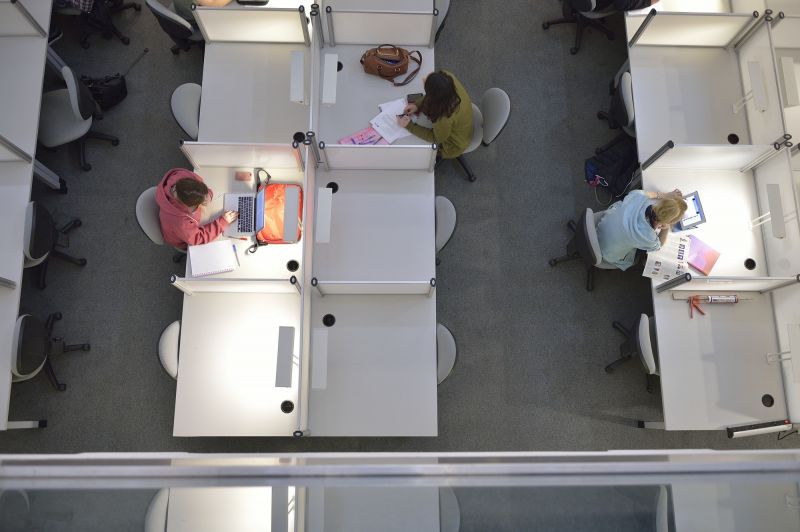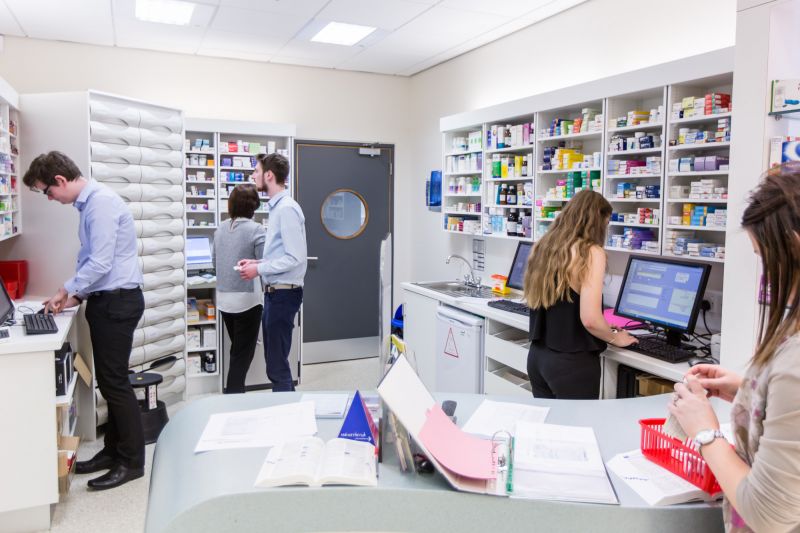Page content
Introduction
This extension to the Disability Discrimination Act 1995 relates to the way in which the University (a service provider) provides existing ‘public services’. These can include goods, facilities and premises which members of the public are permitted to enter. This extension covers providing public services to disabled people and previously disabled people, or ‘disabled customers’. This could include buyers or shoppers, consumers or clients, patrons or service users. As such, it places duties on the University to ensure that physical features do not make public services impossible or unreasonably difficult for disabled people to use (in order to create a society where all disabled people can participate fully as equal citizens).
The provision of educational services to disabled students is covered by the Special Educational Needs and Disability (NI) Order (SENDO) as implemented in 2005.

Purpose
The purpose of this guidance document is to provide information about:
- The duties placed by Part III of the Disability Discrimination Act 1995 on those providing goods, facilities or services to the public and those selling, letting or managing premises;
- The concept of reasonable adjustments with specific reference to overcoming physical barriers to access to the premises; and
- The implications of these duties for Ulster University.
Rights of Access: Goods, Facilities, Services and Premises

As of 1 October 2004, the University is prohibited from discriminating against disabled people in the provision of goods, facilities, services and premises. In addition, the University must take reasonable steps to ensure that disabled people are not placed at a substantial disadvantage (in comparison to those who do not have a disability) in relation to the goods, facilities, services and premises provided to them.
The main points arising from the Act are:
- It amends the Disability Discrimination Act 1995 (DDA) and becomes Part III of the Act;
- The Act applies to the whole range of services and facilities provided; and
- The Act protects both disabled people and people who have previously been disabled (within the terms of the Act) from discrimination.
DDA Definition of Disability
According to the DDA, an adult or child is disabled if they have a physical or mental impairment which has a substantial (more than minor or trivial) and long term (lasting or expected to last for at least a year) adverse effect on their ability to carry out ‘normal’ day to day activities.
This definition includes people with:
- Physical or mobility impairments (including sensory impairments);
- Visual impairments;
- Hearing impairments;
- Dyslexia;
- Medical conditions (unseen disabilities such as heart condition, asthma, AIDS, cancer or diabetes); and
- Mental health difficulties (excluding addiction to alcohol or non-prescribed drugs).
The following conditions are not considered to be impairments under the Act:
- Seasonal allergic rhinitus (for example, hayfever) except where it aggravates the effect of another condition;
- Tendency to set fires;
- Tendency to steal;
- Tendency to the physical or sexual abuse of other persons;
- Exhibitionism;
- Voyeurism; and
- Disfigurements which consist of a tattoo (which has not been removed), non-medical body piercing, or something attached through such piercing.
DDA Definition of Discrimination
According to the DDA, discrimination is:
Treating someone less favourably than someone else for a reason related to their disability without justification. This includes:
- Refusing to provide (or deliberately not providing) any service which it provides (or is prepared to provide) to members of the public;
- Providing a service of a lower standard or in a worse manner, or providing service on worse terms;
- Failing to make a reasonable adjustment without justification; or
- Victimisation.
Coverage
This Act applies to:
- Any person or any organisation or entity which is concerned with the provision in the United Kingdom of services (including goods and facilities1) to the public or a section of the public;
- Disabled people who use, or seek to use, the services so provided, whether as customers, buyers, shoppers, consumers, clients, patrons or service users;
- All services (goods and facilities) which are provided free and those which are provided in return for payment;
- All people who are involved in providing services, regardless of their position in the organisation and their mode of working (for example, whether full- or part-time, permanent or temporary staff, a volunteer, contractor or agent);
- The provision of the service and not the nature of the service or business or the type of establishment from which it is provided (for example, it is the way in which existing services are provided rather than the type of service provided);
- Access to and use of any place which members of the public are permitted to enter (entrances and exits, emergency escape procedures, toilet facilities and in-house restaurants open to the public);
- The provision of accommodation (for example, Halls of Residence - including common areas such as access roads, pavements, car parks, toilets, lifts and stairs);
- ‘Other’ education or training provided to the public2 (for example, outreach courses, short courses);
- Non-educational services provided by the University (for example, lecture theatres offered to outside organisations as a conference venue must be accessible);
- Welfare and advice services provided by the University; and
- Non-educational services provided on the University premises.
The University therefore has a duty to ensure that all organisations or franchisees operating on University premises are aware that those organisations or franchisees are responsible for any duties that may arise under the Act, with regard to the way in which their services are provided.
- 1 Among the services which are covered are those provided to the public by: charities, volutary and community organisations, restaurants, pubs, post offices, banks, building societies, telecommunications, sports stadia, leisure facilities, advice agencies, libraries, theatres, cinemas, hairdressers, shops, market stalls, telesales businesses, places of worship and clinics. This list is not exhaustive.
- 2 The provision of education is covered in the Special Educational Needs and Disability (NI) Order in 2005.

The concept of reasonable adjustments requires the University (an organisation) to take reasonable steps to ensure disabled people are not placed at a ‘substantial’ disadvantage, meaning where it is impossible or unreasonably difficult for a disabled person to use its services. A reasonable adjustment might involve:
- Changing standard institutional practices, policies and procedures;
- Providing auxiliary aids and additional services (any kind of aid or service), whether temporary or permanent;
- Training staff to work with disabled people and to provide appropriate adjustments, for example, allowing more time to serve a disabled customer;
- Encouraging staff to acquire additional skills in serving disabled people, for example, in order to communicate with hearing impaired people and those with speech impairments; or
- Altering a physical feature by removing, altering or avoiding the feature or by providing services by alternative methods.
It is important to note that:
- This duty applies to disabled people at large, and applies regardless of whether the service provider knows that a particular member of the public is disabled or whether it currently has disabled customers;
- Disabled people are a diverse group with different requirements; and
- Not all disabilities and impairments are visible.
This is an Anticipatory Duty
This means we cannot simply wait until a person with a particular requirement arrives and then make the adjustments. We should prepare and anticipate the different requirements disabled people will have so that they can be served without being placed in unreasonable difficulty.
Once a service provider has become aware of the requirements of a particular disabled person who uses or seeks to use its services, it might become reasonable to take a particular step to meet these requirements. This is especially so where a disabled person has pointed out the difficulty which they face in accessing services, or has suggested a reasonable solution to that difficulty.
This is a Continuing Duty
This means that service providers should keep the duty under regular review.

The following examples of best practice reasonable adjustments are recommended. Whilst some of these are already under consideration, senior officers will need to consider what specific action is required in their area.
Written Communication
All course leaflets or documentation, all staff e-mails and any written document in the public domain should:
- Conform to the Public Sector Bodies Accessibility Regulations 2018 and Ulster University’s Accessibility Standards; and
- Be available in alternative formats, that is in ‘Word’.
Electronic Communication
All websites, on-line courses, et cetera, should be accessible and W3C approved.
Signage
Disability friendly signposting (use of tactile surfaces and contrasting décor) and maps (large print or tactile) which identify disabled parking and disability friendly routes should be provided for each campus.

All interaction with the public should take into consideration that some people may need auxiliary aids or services such as:
- Written information (such as a leaflet or guide);
- A facility for taking and exchanging written notes;
- An induction loop system;
- Information displayed on a computer screen;
- A verbatim speech-to-text transcription service;
- Information displayed on a computer screen;
- Subtitles;
- Videos with sign language interpretation;
- Text phones, telephone amplifiers and inductive couplers;
- Teletext displays;
- Audio-visual telephones;
- Audio-visual fire alarms;
- Qualified sign language interpreters or lip speakers;
- Readers;
- Information on audiotape;
- Telephone services to supplement other information;
- Spoken announcements or verbal communication;
- Assistance with guiding;
- Audio-description services;
- Large print or tactile maps or plans and three dimensional models: and/or
- Touch facilities (for example, interactive exhibits in a museum or gallery).
This list is not exhaustive.

When considering reasonable adjustments, the University will take into account:
- The need to maintain academic standards;
- The need to maintain other prescribed standards (for example, standards of an external validating body);
- Health and Safety;
- Financial resources available and cost;
- The relevant interests of other stakeholders, including other students;
- The type of service provided;
- Practicality;
- The effect of the disability on the individual disabled person;
- The amount of disruption caused by taking the steps;
- Money already spent on making adjustments; and
- Other aids or services available or funding.
Courts will take into account:
- Costs, convenience and practicability;
- The total resources of the University;
- The effectiveness of change;
- The financial assistance available; and
- The dignity of the disabled customer.
Any justification for refusing a reasonable adjustment must be material and substantial.

All staff have a responsibility to:
- Ensure that they do not treat a disabled person less favourably than someone else for a reason relating to the person’s disability. This applies to everyone who falls within the definition of ‘disability’ and not just those who appear to be disabled. All service providers should therefore concentrate on meeting the needs of each individual customer, regardless of whether they are disabled or not.
- Attend disability awareness training so that they fully understand: the University’s policy on the non-discriminatory (equitable) provision of services; that it is unlawful to discriminate against disabled people; the concept of reasonable adjustments; and the implications to the University of discriminating against a disabled person.
- Ensure that disabled people are made aware of any reasonable adjustment which has been put in place.
- Establish a means of letting disabled people know how to request assistance (for example, through the use of signs or publicity materials).
- Survey existing users for further individual and general requirements for reasonable adjustments.
- Continually review any reasonable adjustments already implemented and ensure that they are appropriate and effective.
- Anticipate future needs of disabled people.

Additional Support and Guidance
If you have any questions about this guidance, please contact the Equality, Diversity and Inclusion Team.

















